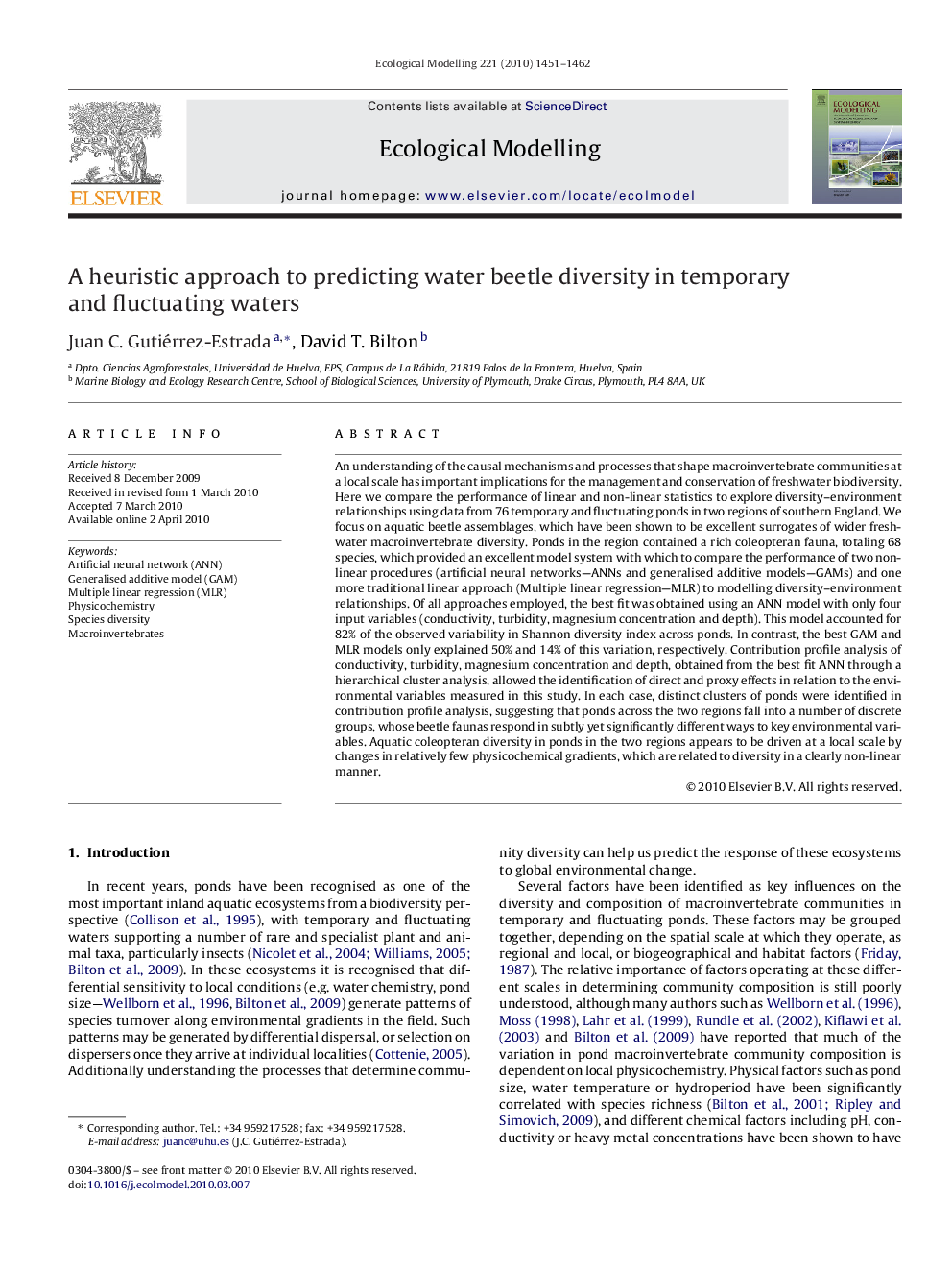| Article ID | Journal | Published Year | Pages | File Type |
|---|---|---|---|---|
| 4377412 | Ecological Modelling | 2010 | 12 Pages |
An understanding of the causal mechanisms and processes that shape macroinvertebrate communities at a local scale has important implications for the management and conservation of freshwater biodiversity. Here we compare the performance of linear and non-linear statistics to explore diversity–environment relationships using data from 76 temporary and fluctuating ponds in two regions of southern England. We focus on aquatic beetle assemblages, which have been shown to be excellent surrogates of wider freshwater macroinvertebrate diversity. Ponds in the region contained a rich coleopteran fauna, totaling 68 species, which provided an excellent model system with which to compare the performance of two non-linear procedures (artificial neural networks—ANNs and generalised additive models—GAMs) and one more traditional linear approach (Multiple linear regression—MLR) to modelling diversity–environment relationships. Of all approaches employed, the best fit was obtained using an ANN model with only four input variables (conductivity, turbidity, magnesium concentration and depth). This model accounted for 82% of the observed variability in Shannon diversity index across ponds. In contrast, the best GAM and MLR models only explained 50% and 14% of this variation, respectively. Contribution profile analysis of conductivity, turbidity, magnesium concentration and depth, obtained from the best fit ANN through a hierarchical cluster analysis, allowed the identification of direct and proxy effects in relation to the environmental variables measured in this study. In each case, distinct clusters of ponds were identified in contribution profile analysis, suggesting that ponds across the two regions fall into a number of discrete groups, whose beetle faunas respond in subtly yet significantly different ways to key environmental variables. Aquatic coleopteran diversity in ponds in the two regions appears to be driven at a local scale by changes in relatively few physicochemical gradients, which are related to diversity in a clearly non-linear manner.
